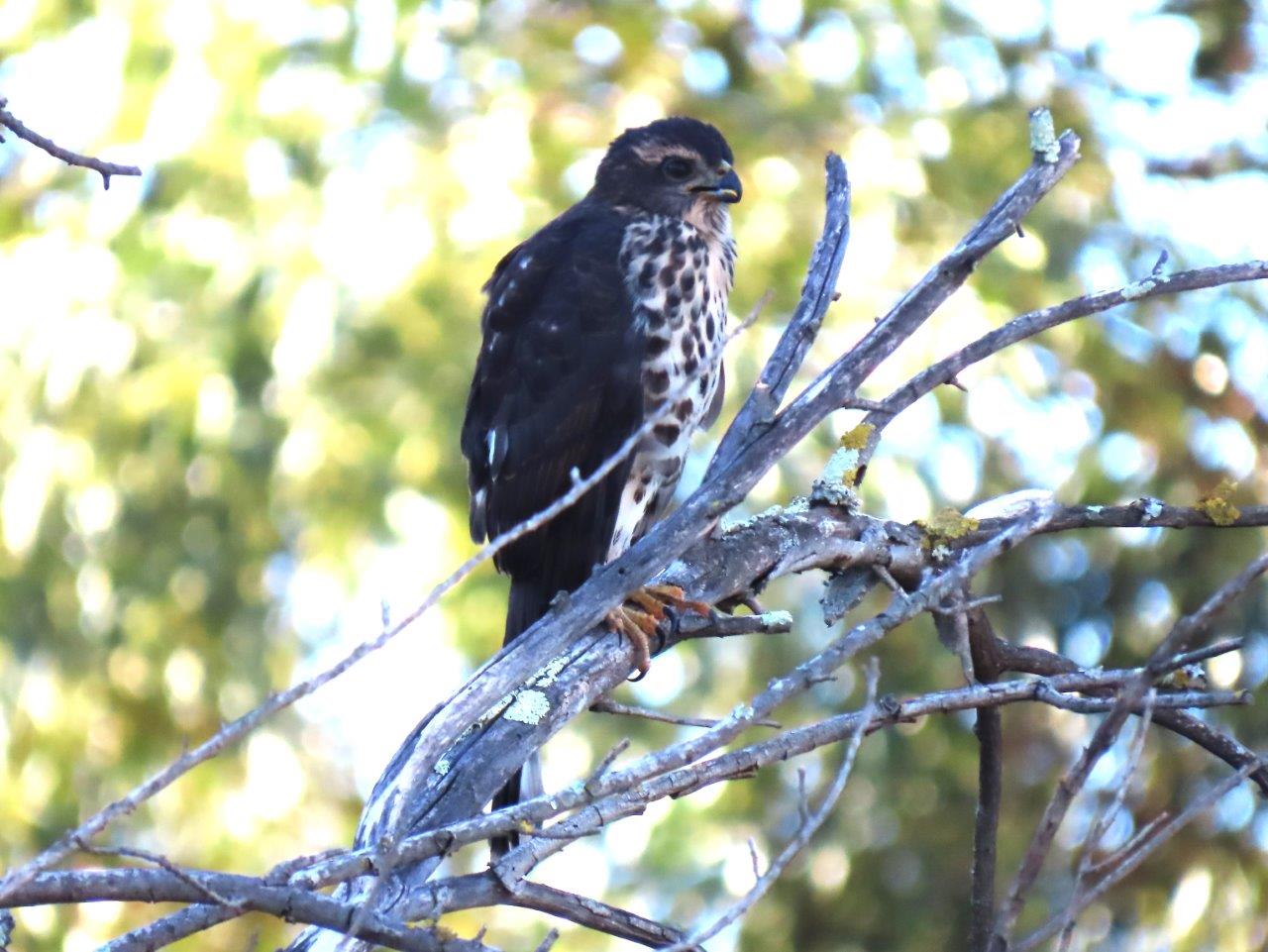In fact, I have a few birds in here, but the first one is my favorite, as it calls me "Curleeeeee"

It is a juvenile African Goshawk, and a real beauty (Accipter tachiro)
I have shared some adult goshawks before, but this is a first for me to get a juvenile and I was so glad to get it. The call lured me to the river down the road, and I must have searched for maybe an hour until I found it. For some reason, it sat on a dead tree's branch singing away, and maybe it was practicing for the goshawk choir:))
Come and see.
The African goshawk is a medium to large-sized Accipiter which is mainly grey and rufous with the typical broad-winged and long-tailed shape of its genus. The adult has grey upperparts which tend to be darker in males than in females, the underparts are whitish marked with rufous barring which is more pronounced in males. The underwing is pale rufous, fading to white on some birds and the flight feathers and tail vary from sooty brown to grey with faint grey bars above, white with grey bars below. The bill is black, the cere is greenish-grey, the eyes are yellow, and the legs and feet are yellow. Juveniles are brown above with whitish unterparts and flanks which are boldly blotched with brown. Females weigh 270–510 g (9.5–18.0 oz), while the smaller males weigh 150–340 g (5.3–12.0 oz). The wingspan is 1.7 times the bird's total length and 440–570 mm (17.2–22.5 in) in males and 540–700 mm (21.1–27.5 in) in females.
The wind rippled its feathers and it let out the sound "curleeeeee". Maybe it wanted to tease me, as I no longer have curly hair:))
By now you know this one below, and it is an adult African Harrier Hawk (Polyboroides typus) with prey.
A closer look, and I will not show you what the prey was because it is not a very nice sight.
King of the speed merchants. This Peregrine Falcon (Falco peregrinus) came over, very high up.
Finally, another of my little favorites. The Southern Double-colored Sunbird (Cinnyris chalybeus).
A wide variety of birds here now in Summer, and soon as Autumn approaches most of the visiting birds have done their breeding and they will be on their way back to their own countries, for the Summer in the northern hemisphere. During Spring and Summer, down here in the southern hemisphere, they do their breeding and they build up the chicks' strength so that they will be able to fly when the time comes at the start of Autumn (Fall).
I hope that you enjoyed the story and the pictures.
Photos by Zac Smith-All Rights Reserved.
Camera: Canon PowershotSX70HS Bridge camera.
Thank you kindly for supporting this post.